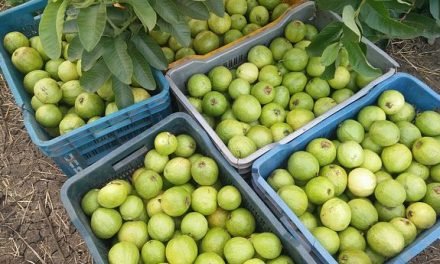The need for higher safety in the food processing industry is paramount. Therefore it requires stringent requirements. Emily Newton lists 10 common hazards in food processing and how to manage them.
10 Common Hazards in Food Processing
Safety is paramount in any industry, but food processing plants face particularly stringent requirements. These facilities share many similar hazards to other manufacturing plants, but the scope of their impact is often wider. In addition to endangering employees, food processing hazards can affect customers, too.
The Need for Better Safety in Food Processing
The need for higher safety in the food processing industry has come under the spotlight after recent events. On March 24, an explosion at the R.M. Palmer Co. chocolate factory in West Reading, Pennsylvania, killed seven workers and hospitalized 10 others.
That same day, the Food Safety and Inspection Service (FSIS) announced a beef recall from an Elkhorn Valley packaging plant. An investigation found that more than 3,000 pounds of beef chuck may be contaminated with E. coli.
Incidents like these bring attention to how common some hazards in food processing industry are. Facilities that hope to avoid these risks should recognize and quantify the dangers they face, then take specific steps to address them. To help, here are 10 common hazards in food processing and how to manage them.
1. Cross-Contamination and Cross-Contact

Foodborne illnesses are some of the food processing industry’s most frequent and damaging hazards. Roughly 48 million people get sick from them annually, and even if an outbreak causes no significant physical damage, it can harm a company’s public image. Consequently, preventing them is crucial, and that starts with addressing cross-contamination and cross-contact.
Cross-contamination is a common source of these outbreaks because it can happen relatively easily. Shared surfaces between raw meat and other foods, poor waste disposal, and even improper storage, can transfer contaminants from one item to another. Similar practices can contaminate some foods with allergens from others.
How to Address It
Preventing cross-contamination and cross-contact begins with recognizing where these incidents can occur. Facilities should review their workflows to find potentially shared surfaces, then implement physical and workflow safeguards to manage them.
Entryway sanitation is one of the most important of these safeguards. Handwashing stations by entry and exit points with visible signage will make it easier for employees to prevent cross-contamination without taking too much time. Physical barriers between areas storing or processing raw meat and other products will also help. Facilities must also train employees thoroughly on PPE and sanitation procedures, ensuring they cover why these practices are important.
2. Harmful Microorganisms
Microorganisms are another common food processing hazard. Bacteria alone is responsible for most foodborne illness outbreaks with a known origin, but viruses, parasites, and some fungi present risks, too.
Many of these harmful organisms exist near food sources in nature, so they can enter processing plants with shipments from suppliers. Some are waterborne, endangering products and workers when facilities don’t have a reliable water purification system. Others enter the workplace when employees come into contact with them outside of work and don’t follow proper sanitation practices when starting their shifts.
How to Address It
Preventing hazards from microorganisms starts with partnering with trustworthy suppliers. Businesses should hold their partners to higher standards, requiring evidence of safe growing practices to minimize the chances of supplier-side errors introducing hazards into the workplace. Mistakes can happen, so facilities also need measures to kill these microorganisms if they enter the plant.
Businesses should use nonporous materials like metal for all preparation surfaces and regularly clean and disinfect them with antimicrobial agents. Because most bacterial growth happens between 40 and 140 degrees Fahrenheit, facilities should also refrigerate areas where perishable foods travel. Regularly maintaining these systems to prevent breakdowns leading to spoilage is also essential.
3. Slips, Trips, and Falls

Some hazards aren’t unique to food processing but still pose significant risks to workers. Such is the case with slips, trips, and falls. These injuries caused 18% of all incidents resulting in days away from work in 2020, occurring at a rate of 21.7 injuries per 1,000 workers.
Frequent washing and similar sanitation practices can leave facility floors slippery, heightening these risks. Some processing plants are also crowded, making it difficult to navigate between obstacles and increasing workers’ chances of running into something. Large warehouses may have more severe fall risks, with high shelves introducing the need for fall protection systems.
How to Address It
Food processing plants should review their cleaning practices to ensure they don’t leave surfaces slippery or sticky. Excess water can increase these hazards, so it’s important to include drying practices in these procedures. Employers should also provide workers with nonslip shoes to mitigate these risks.
Clearing floors as much as possible to remove tripping hazards where employees may walk is similarly important. Facilities with high shelves should provide safety measures like fall restraints, scissor lifts, and helmets. Companies with high enough budgets may consider automating material handling for the hardest-to-reach products to remove human workers from these hazards.
4. Fire and Combustion Hazards
As the recent explosion in West Reading highlights, fire, and combustion can also be prevalent food processing hazards. These risks may not be as immediately evident as in other sectors, but many processing plants work with flammable materials and combustible particles.
Facilities with ovens or other cooking equipment may contain flammable gases. Even if they don’t, ammonia — present in many refrigerants and cleaners — is flammable in some concentrations, and particulate matter like cocoa powder and cornstarch can combust. These particles linger in the air, and any spark will travel between them quickly, causing explosions.
How to Address It
Any facility that works with flammable materials, especially in powdered form, should heavily restrict fire hazards on the property. That includes strict no-smoking policies, storing high-temperature equipment far away from these materials, and keeping all equipment in top condition to prevent sparks.
Many people may not realize that things like cornstarch present significant combustion hazards, so companies should emphasize these risks in employee training. Regular cleaning and high-efficiency air filters to remove particulate matter from the air will also help. Facilities should also install and regularly test fire suppression systems.
5. Cuts and Scrape Hazards
Cuts and scrapes are other highly common food processing hazards. Many food processing workflows involve working with knives or other sharp objects, introducing these risks. Some facilities may automate cutting processes, which helps, but sharp edges on these machines still present risks if workers get close to them.
Cut and scrape hazards are more of a concern in food processing than in other industries. Researchers have found that at least 20 different pathogens can transmit via blood. If a worker cuts themselves and the blood gets into the product, it can endanger customers and other employees.
How to Address It
The most effective way to manage these hazards is to remove humans from the equation entirely. Organizations should seek to automate processes involving sharp edges and implement physical safeguards to keep workers from getting close to these hazards.
In some cases, facilities are unable to automate cutting or chopping practices. In those instances, they should provide employees with proper PPE like cutting gloves and Kevlar sleeves. Thorough employee training is also necessary.
6. Hazardous Machinery
At least 73% of food manufacturing companies actively use or are in the process of implementing automation in their facilities. This minimizes some workplace hazards, but machinery introduces some risks of its own.
Heavy machines pose struck-by or caught-in-between risks, especially if the equipment in question is mobile. Any moving parts can also endanger employees due to pinch points or cutting risks. Some older machines may run at high temperatures, introducing burn hazards.
How to Address It
Safety by design is the best solution for equipment-related hazards. Food processing plants should look for machine options with built-in safety features like automatic shut-offs or minimal exposed moving parts. Additional physical guards around machines to block contact with employees will also help.
Organizations can eliminate many accidents through a more effective maintenance program. Predictive maintenance — which uses Internet of Things (IoT) sensors to detect potential issues and alert workers to fix them as they arise — is the best option. It lets companies address problems while still small and can reduce unplanned downtime by 60%, dramatically limiting malfunctions that may endanger nearby workers.
7. Noise Hazards
Workplace noise is an often overlooked but serious food processing hazard. Busy facilities with large machines generate considerable noise, making it difficult to spot and respond to other dangers.
Too much noise can directly impact employees’ health, too. Repeated exposure to sounds at or above 85 decibels can cause permanent hearing loss, tinnitus, and related issues.
How to Address It
Food processing plants can minimize noise hazards by buying quieter options. They can also use noise-dampening safeguards like adding insulation, lining ductwork, using vibration isolation pads and fitting silencers to pneumatic exhausts.
After installing these fixes, managers should test sound levels throughout the workplace. Workers in locations that reach 80 decibels should use hearing protection. Companies can also implement regular breaks and stagger shifts to minimize exposure.
8. Chemical Hazards

Food processing employees may also encounter hazardous chemicals in their day-to-day work. Some foods naturally produce toxins that can be dangerous in high enough concentrations. Employees may also come into contact with chemical hazards from refrigerants, propellants, or similar compounds used in their work equipment.
Other chemical hazards can stem from cleaning products. Because these facilities — especially meat packing plants — must disinfect work surfaces regularly, workers may encounter chemicals contributing to chronic respiratory problems, headaches and allergic reactions.
How to Address It
Food manufacturers should start by reviewing the chemicals they use in production and cleaning, as well as anything in their equipment. Organizations should follow manufacturers’ instructions if any of these substances are potentially harmful. Appropriate steps may include providing respirators to employees, using hand and eye protection, or ensuring proper ventilation.
Facilities should also emphasize education. All workers should know what risks each chemical poses and how to use them safely. That includes creating formal, detailed action plans for a spill or similar incident for each chemical.
9. Ergonomic Risks
Ergonomic risks may seem less dramatic than dangerous chemicals, but they’re another critical food processing hazard to address. Many operations involve repeated lifting and carrying motions, which can cause substantial damage over time if companies aren’t careful.
Musculoskeletal disorders are the most common workplace injury type and the second-most common incident resulting in trips to the emergency room. These injuries also typically build over time, meaning employees may not notice them until it’s too late, so prevention is crucial.
How to Address It
Automation is the most effective solution to this issue. Using robotic material-moving systems will ensure human workers don’t have to manage heavy or repeated loads that could injure them. Robots are expensive, but facilities can make the most of them by automating the heaviest or most frequent loads while leaving the rest manual.
Employees should also receive thorough training on proper lifting techniques. Pre-work guided stretching and PPE-like lifting belts can also help prevent overexertion.
10. Electrical Hazards
Many food processing plants use electrical equipment extensively and must manage electrical risks. These may not be as prevalent as other hazards, but they can cause severe injuries and deserve attention.
Electrical hazards typically emerge from exposed or frayed wiring in equipment. Overloaded circuits and aging infrastructure can also introduce risks since they make surges more likely.
How to Address It
Regular inspections of wiring and circuit breakers will help catch frayed wires or similar issues early. Specific workplace policies are necessary for workers to alert managers and isolate hazards. Shock-resistant PPE, like rubber gloves, may be needed.
Lockout/tagout (LO/TO) procedures are also essential. Each piece of electrical equipment should have a specific LO/TO process, including a system for recording who is responsible for them at each moment. Designing circuits to enable emergency shut-offs without disabling other machines is also a good idea.
Address These Hazards in Food Processing to Stay Safe
Hazards in food processing are abundant, but none are beyond control. Once businesses recognize what risks they face, they can follow these measures to mitigate and prevent them.
Managing these hazards will keep workers safe and protect the health of customers down the line. In addition to improving public health, that will maintain companies’ good standing and reduce related costs.
References:
- https://www.wapt.com/article/deadly-chocolate-factory-explosion-highlights-combustion-risks-hazards-of-food-manufacturing/43446602#
- https://www.fsis.usda.gov/recalls-alerts/elkhorn-valley-packing-recalls-boneless-beef-chuck-product-due-possible-e–coli-o103?permalink=4503898680325BB12B960C10BFCD86182C01002C205373614E0DC60D96DCD81C
- https://www.cdc.gov/foodborneburden/index.html
- https://revolutionized.com/how-can-we-address-food-safety-concerns-in-america/
- https://www.canr.msu.edu/resources/keeping_foods_out_of_the_temperature_danger_zone_e3254
- https://injuryfacts.nsc.org/work/work-overview/top-work-related-injury-causes/
- https://www.osha.gov/ammonia-refrigeration
- https://www.cdc.gov/nora/councils/hcsa/stopsticks/bloodborne.html
- https://www.quincycompressor.com/streamline-food-beverage-manufacturing-process/
- https://iotbusinessnews.com/2020/10/26/91544-how-predictive-maintenance-is-helping-businesses-save-millions-every-year/
- https://pubmed.ncbi.nlm.nih.gov/31795665/
- https://www.lung.org/clean-air/at-home/indoor-air-pollutants/cleaning-supplies-household-chem
- https://www.bls.gov/opub/ted/2021/32-percent-of-nonfatal-injuries-resulting-in-days-away-from-work-treated-in-emergency-room-in-2019.htm
Emily Newton is the Editor-in-Chief of Revolutionized Magazine. She has over six years experience writing for the food and beverage industry.
‘Processed Food Industry’: The Voice of Food Processing Industry
Processed Food Industry (PFI) is a premier English-language monthly B2B publication (ISSN 09721649) headquartered in New Delhi, catering to the vibrant and ever-evolving food processing industry. While we don’t claim to be the largest or most widely read, our proud legacy of over 27 years—publishing continuously since 1997—has earned us the trust of industry professionals as a reliable source of insights and information.
If your goal is to tap into the booming Indian and South Asian markets to promote your equipment, technology, software, or consumables, PFI is your strategic partner. With our hybrid approach across print, web, and social media, we help you establish strong brand recognition rooted in market relevance. Backed by a team of top-tier technical writers, we’re ready to work closely with you and your customers to craft compelling content that drives results.
India and South Asia’s food industry is expanding rapidly, driven by efficiency and cutting-edge innovations. Don’t miss the opportunity to elevate your brand and engage with this dynamic market. Get our 2025 media kit to fine-tune your marketing strategy, increase your visibility, and convert potential customers into valuable conversations. Additionally, ask for a sample copy of our monthly magazine and experience the quality and relevance we deliver.
Let us help you define your role in the future of the food processing industry.
Have a news or topic to share with industry? Write to us editorial@pfionline.com

















